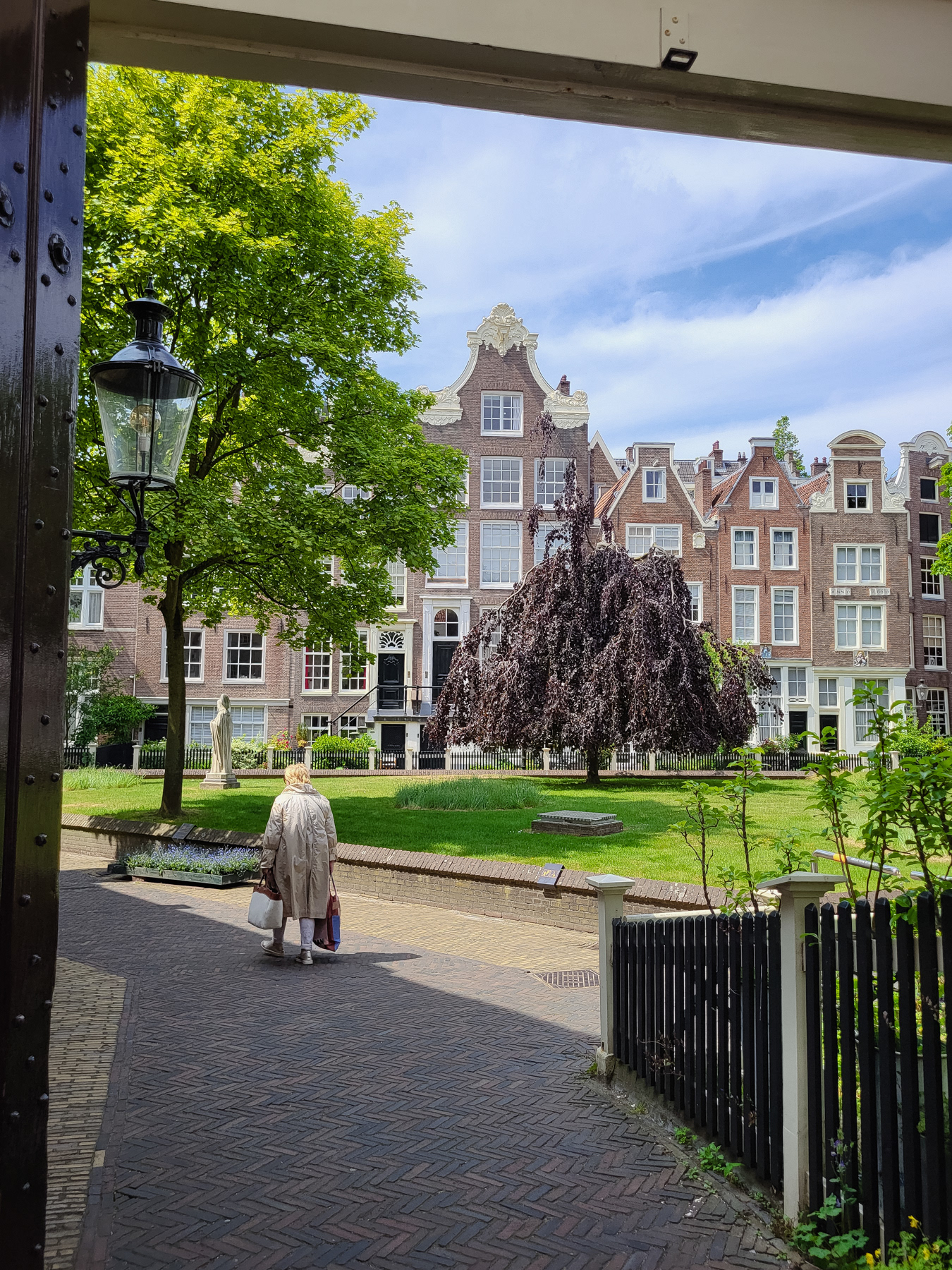On the ferry from Amsterdam Central Station to Noord (North)
In my late teenage years, I did my practice in Amsterdam to gain experience in a sector where I saw my future at the time: tourism. And while tourism and Amsterdam are very much intertwined, my work in a beautifully located office at one of the main canals was not connected to the visitors of the city. I served those who were leaving the capital for business trips around the globe. After practicing my future job, I left Amsterdam, and moved away from the career path I envisioned and chose journalism instead. It would take about 1.5 decades before something of this tourism job got back to me - and intertwined with my journalism job when I wrote a travel guide book about Sweden.
It would take even longer before I returned to Amsterdam, which might sound weird to an outsider. Basically, the Netherlands has so many other beautiful spots and cities to offer that Amsterdam somehow never is on the top of the list unless - maybe - you are originating from it. Spoiler alert: even the nation's main gateway by air - Amsterdam Schiphol International Airport - is not really in Amsterdam (but in the municipality of Haarlemmermeer).
But during the last couple of years, my compass has sent me a little more regularly to Amsterdam. For business and for pleasure. My latest journey was in May 2025. After interviewing a charming science and technology boss, I took a pretty old camera and my mobile phone out for a 2-hour walk. And as it goes with beautiful cities like Amsterdam, there is always something new to discover, even if it has been there all along.
Amsterdam Central Station, May 2025
Amsterdam Central Station
With a facade by archited Pierre Cuypers and the constructional design by railway engineers, Amsterdam Central Station has been the capital's main transport hub ever since it opened on 15 October 1889. The idea of one central location, to replace Amsterdam Willemspoort and Westerdok stations, was launched by Rudolph Thorbecke, who was the Interior Minister of the Netherlands at the time. The cithy council chose to locate the new station at the harbour front, so it could serve existing lines better and that where it still is today.
Built on Station Island (Stationseiland; which actually exists of three connecting artificial island) and 8,687 wooden piles, the initial station lacked the impressive arched roof that greets visitors as soon as they step out of the train today. Word has it that Cuypers was mainly interested in the front building. A civil railway engineer named L.J. Eijmer drew the plans for this roof that spans 45 metres, which was subsequently manufactured in and transported by ship from Derby, England.
Since then the station has been expanded, renovated and parts have been reconstructed. Works continue even today. With about 192,000 passengers every year, Amsterdam Central Station is the second-busiest railway hub of the country - with only Utrecht Central Station taking the pole position.
Damrak and typical Amsterdam facades near Central Station, May 2025
Damrak and Beurs van Berlage
The first houses located directly at the water greet the visitor when one walks from Amsterdam Central Station into the city. This avenue is called Damrak and used to be the financial heart of the country. The monumental building Beurs van Berlage was the location of the Amsterdam Stock Exchange.
Architect Hendrik Petrus Berlage signed for the design of the stock exchange (beurs in Dutch) building that was constructed between 1896 and 1903, and set the tone and inspired many other architects in the decades to come. With the last financial institution leaving the building in 1987, the Beurs van Berlage turned into a venue for events.
Elephants in front of the Beurs van Berlage to celebrate 750 years of Amsterdam, May 2025
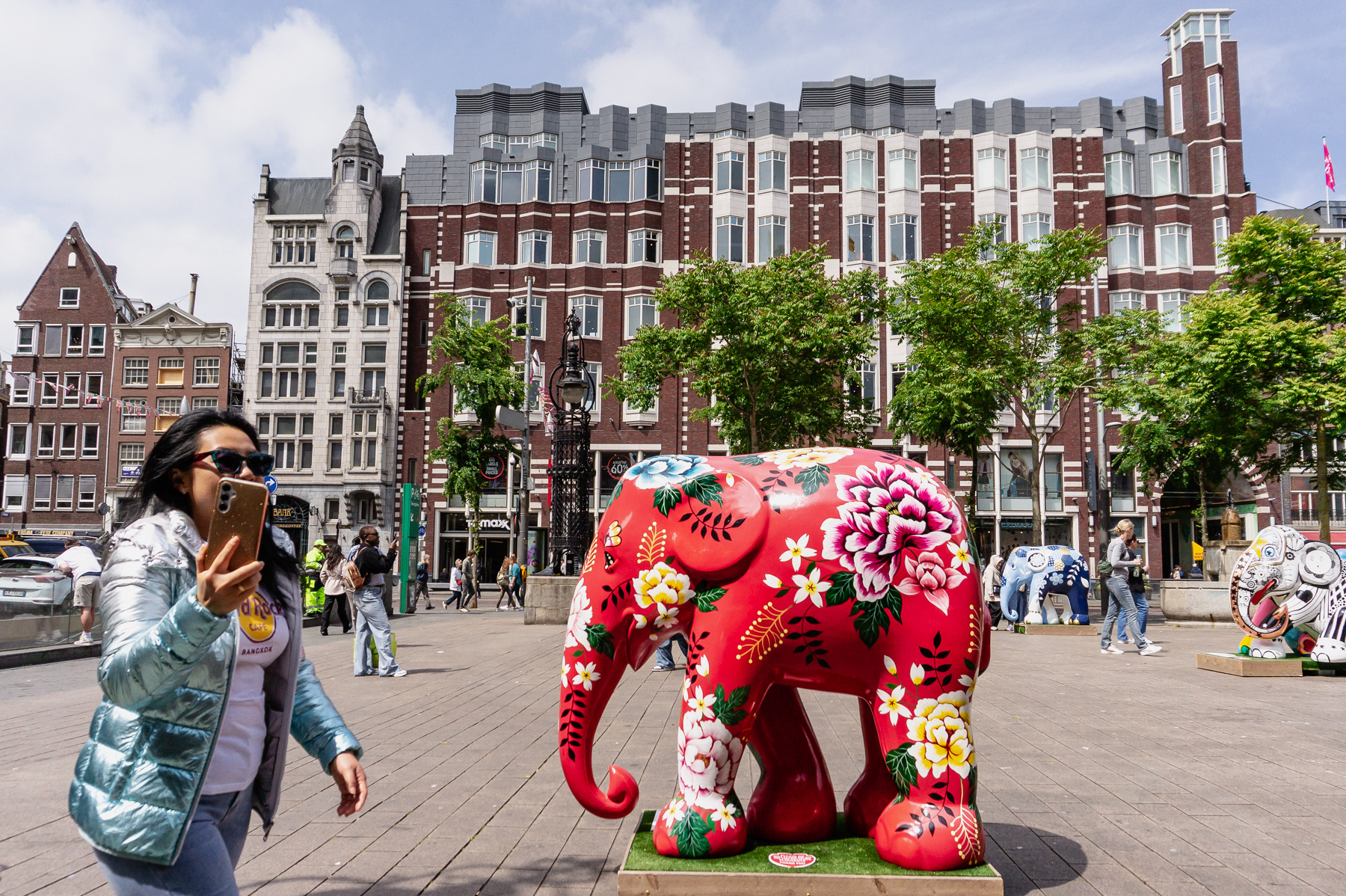

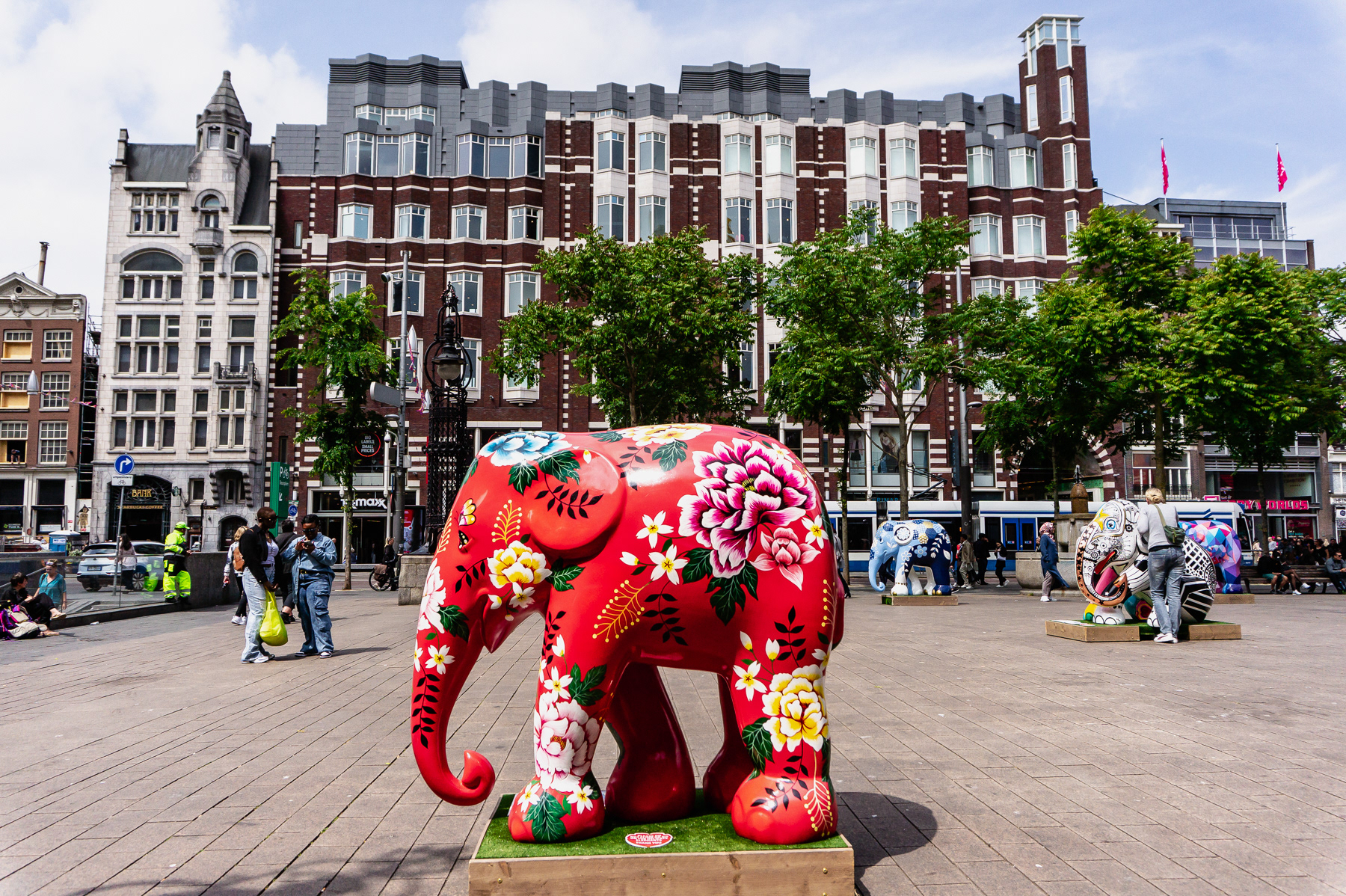
Grimnessesluis (bridge)
Once part of a triptych of bridges, the Grimnessesluis is the only bridge that still exists in this part of Amterdam and has its origins in the 1500s. Apparently, this achievement has inspired many artists that painted or drew an image of this bridge in their works. The current bridge is the result of renovation works from 1937. Aged and with limitation to carry weight, the bridge has been declared car-free since 2018.
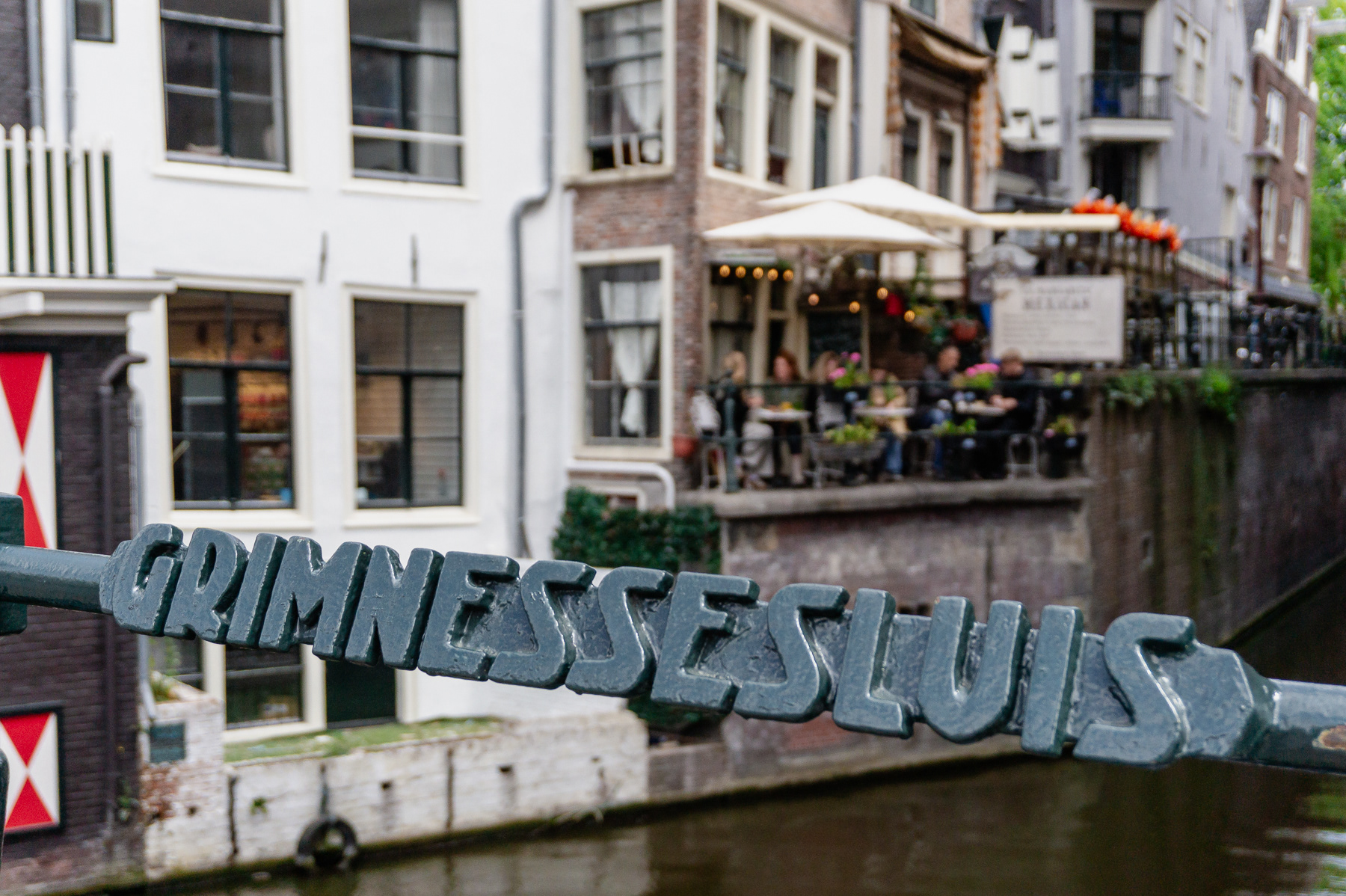
Close-up of the Grimnessesluis bridge name.

A local boat passes the Grimnessesluis bridge.
Oudezijds Voorburgwal
The Oudezijds Voorburgwal canal is the natural border between the central Amsterdam with monumental buildings and the red-light district (De Wallen). Many tourists have no idea of this and wonder - including with kids asking questions about the "ladies" they see - unexpectedly into the more "dramatic" part of the innertown.
Oudezijds Voorburgwal canal
Singel
Connecting inner parts of the historic Amsterdam with the IJ river, the Singel canal used to mark the western border of this city - until 1585 when Amsterdam expanded beyond that. The Singel has some beautiful arched bridges, including the oldest still existing one in Amsterdam at Oude Leliestraat street. Near Muntplein square, the Singel flows into the Amstel river. Near this square, the famous flower market with its greenhouses construction is located at the Singel canal.
The flower market at Singel and view towars Muntplein square
The Amsterdam Canals (Canal Belt / Grachtengordel)
The Amsterdam Canal Belt is a system of canals running parallel to each other. It makes navigating through the city from east to west relatively easy. The canals of Amsterdam were constructed between 1612 and 1682, and connect the inner parts of the historic city to the IJ river. The canals were mainly used for transporting goods, and to some extend, still have this function today.
Seen from Central Station, the Amsterdam canals expand to the west, in curved rings, with each ring (canal) becoming longer as it has to cover more area. The order of the four main canals running from north to south (east to west) is as follows: Singel, de Herengracht (Gentlemen's Canal), de Keizersgracht (Emperor's Canal) en de Prinsengracht (Prince's Canal). Further out are the Lijnbaansgracht (Rope Walk Canal), Singelgracht (not to confuse with Singel), Da Costagracht and Bilderdijksgracht. There are also a few connecting canals running from east to west.
Bridge spanning the Leidsegracht, that is a east to west connecting canal.
Begijnhof
The only inner court of private dwellings built in Amsterdam in medieval times is called Begijnhof. For those with historic knowledge, it was originally indeed a beguinage, a place where religious women would live that were integrated in the world around them - hence not like nuns who withdraw mostly from the public world. The Begijnhof in Amsterdam centre dates back to at least the mid 1300s.
The Begijnhof still functions today, and the renovated buildings are home to a 105 mostly elderly ladies. Visiting the inner court comes therefore with some limitations, and these are safeguarded by volunteers of the Foundation Begijnhof at the entrace.
The ancient, restored wooden house (Het Houten Huys) is only one of two wooden houses still existing in the heart of Amsterdam. Dating back to 1420, it is the oldest wooden hosue of the capital.
Begijnhof Amsterdam, May 2025

Begijnhof, Amsterdam

The Wooden House in Begijnhof
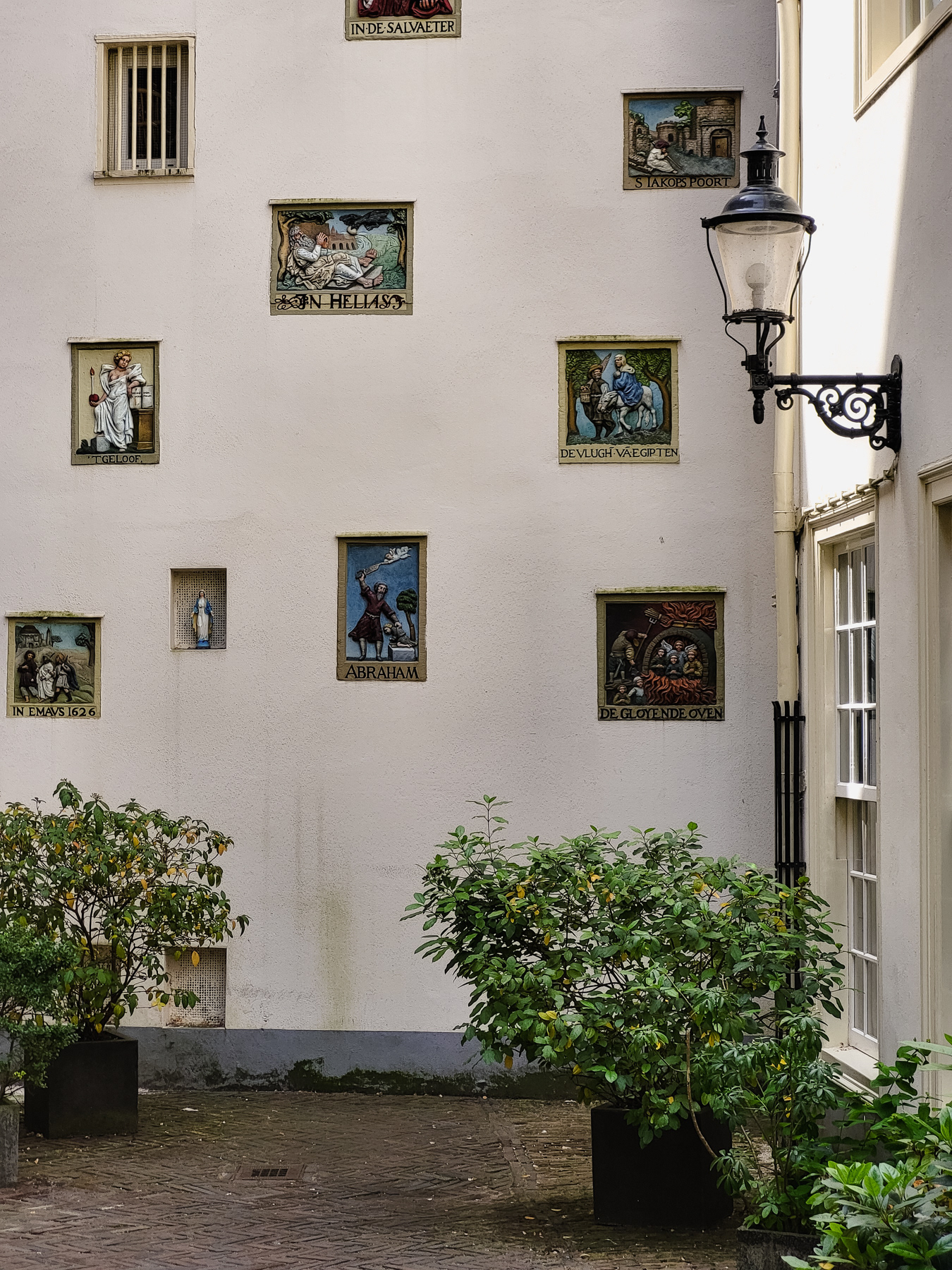
Facade stones at Begijnhof

Detailed view of the Begijnhof, with buildings from the 1600s.
